CWT Members Vote to Continue Export Assistance Program Through 2021
June 13, 2018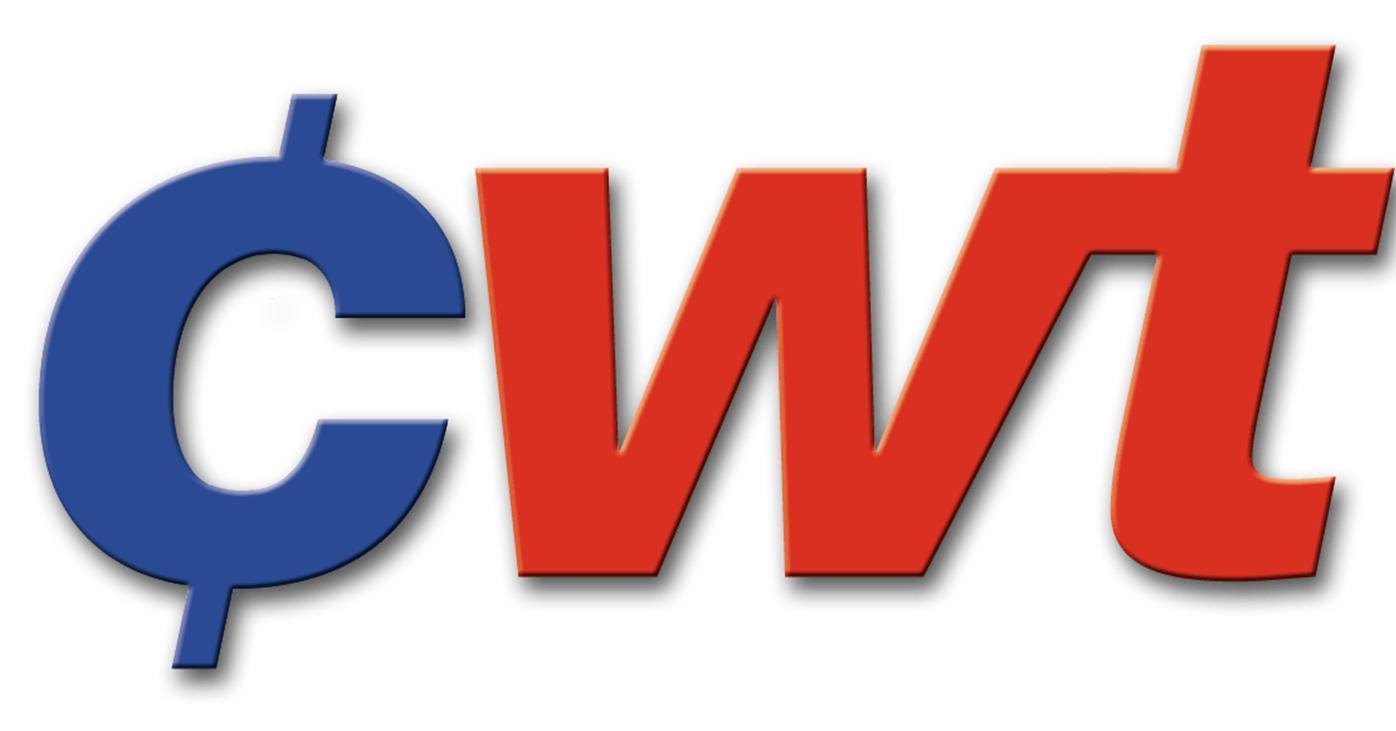 The NMPF Board of Directors voted in early June to continue the Cooperatives Working Together (CWT) program, the historic dairy farmer self-help export assistance effort.
The NMPF Board of Directors voted in early June to continue the Cooperatives Working Together (CWT) program, the historic dairy farmer self-help export assistance effort.
CWT’s three-year extension, through 2021, comes at a time of growing U.S. milk production, weak global dairy prices and increased worldwide competition. CWT – developed and managed by NMPF – is the only program of its kind that enables farmers to use a private enterprise that increases the competitiveness of U.S. dairy exports. CWT is funded by dairy cooperatives and individual dairy farmers, who contribute $0.04/cwt. on their milk production.
“CWT is a unique and highly cost-effective tool for America’s dairy farmers, and the ongoing commitment of America’s farmer-owned dairy cooperatives to the program sends a signal to dairy producers at home, and dairy exporters abroad, that the United States will maintain a strong competitive stance in the global dairy market,” said NMPF Chairman Randy Mooney, a dairy farmer from Rogersville, Missouri.
Through the first five months of 2018, CWT has facilitated the sale of 56 million pounds of dairy products, representing the equivalent of 649 million pounds of milk. Since the export assistance program’s inception in 2003, it has helped members sell 887 million pounds of dairy products, the equivalent of more than 11.1 billion pounds of milk. For more information on CWT, visit www.cwt.coop.
Revisions to CWT Operating Procedures Help Increase Dairy Export Sales in May
June 13, 2018In May, member cooperatives in the Cooperatives Working Together (CWT) program secured 33 contracts to sell 2.36 million pounds of American-type cheeses, 2.54 million pounds of butter and 9.26 million pounds of whole milk powder to customers in Asia, Central America, Europe, the Middle East, North Africa and Oceania. The product will be shipped to customers in 25 countries in five regions of the world from May through October 2018.
The 2018 total of CWT-assisted dairy product sales is 35.36 million pounds of cheese, 11.04 million pounds of butter and 10.18 million pounds of whole milk powder. The total tonnage is up 46 percent compared to the first five months of 2017. These transactions will move overseas the equivalent of 649 million pounds of milk on a milkfat basis.
The amount of dairy products slated for export through CWT reflects current contracts for delivery, not completed export volumes. CWT will pay export assistance to the bidders only when export and delivery of the product is verified by the submission of the required documentation.
A thriving dairy export sector is critical to the growth and viability of dairy farmers across the country. Regardless of whether a cooperative is actively engaged in exporting cheese, butter or whole milk powder, the domestic market cannot absorb the current level of domestic milk production. CWT provides a means to move domestic dairy products to overseas markets by helping to overcome certain disadvantages, such as the domestic/global price gap and shipping costs. All cooperatives and dairy farmers are encouraged to add their support to this important program. Membership forms are available on the CWT website.
Farm Bill Slated for Reconsideration in House; Senate Agriculture Committee Approves Its Version
June 13, 2018 NMPF continues to work with its congressional allies to ensure the enactment of a bipartisan, bicameral Farm Bill before the current one expires on Sept. 30. Both the House and Senate are making progress on their respective versions of the Farm Bill, with action likely in both chambers in June.
NMPF continues to work with its congressional allies to ensure the enactment of a bipartisan, bicameral Farm Bill before the current one expires on Sept. 30. Both the House and Senate are making progress on their respective versions of the Farm Bill, with action likely in both chambers in June.
The 2018 Bipartisan Budget Act – the large spending bill passed earlier this year – made key improvements to the dairy Margin Protection Program (MPP) and expanded risk management tools for dairy farmers, but additional dairy policy changes are needed in the 2018 Farm Bill. NMPF is seeking additional improvements to the MPP, such as increasing the program’s coverage levels to ensure that it better reflects producer margins, as well as ensuring that the program is applied equitably to producers of all sizes.
The House Agriculture Committee adopted its Farm Bill in April, but disagreements between the two parties on nutrition issues resulted in a party-line vote on the measure in committee. The House bill includes several NMPF priorities, including additional reforms to the dairy safety net, as well as provisions on conservation, trade and nutrition.
When brought to the House floor on May 18, the Farm Bill failed to pass due to an unrelated dispute over the future of immigration policy. During the bill’s consideration, NMPF, the International Dairy Foods Association and a broad coalition of agricultural, public health and consumer organizations worked to resoundingly defeat an amendment that would have permitted the sale of raw milk across state lines (see following story).
The House is now slated to re-vote on its version of the bill on June 22. Meanwhile, the Senate Agriculture Committee approved its version on June 13. It also makes several improvements to the dairy safety net, although the bills are not identical and will need to be reconciled in a conference committee once approved by each chamber of Congress. Given that the impending election season is likely to deter action on any congressional initiatives, NMPF has continued to urge lawmakers to prioritize work on the Farm Bill this summer.
NMPF Spearheads Opposition to Defeat Farm Bill Amendment Aimed at Legalizing Interstate Sale of Raw Milk
June 13, 2018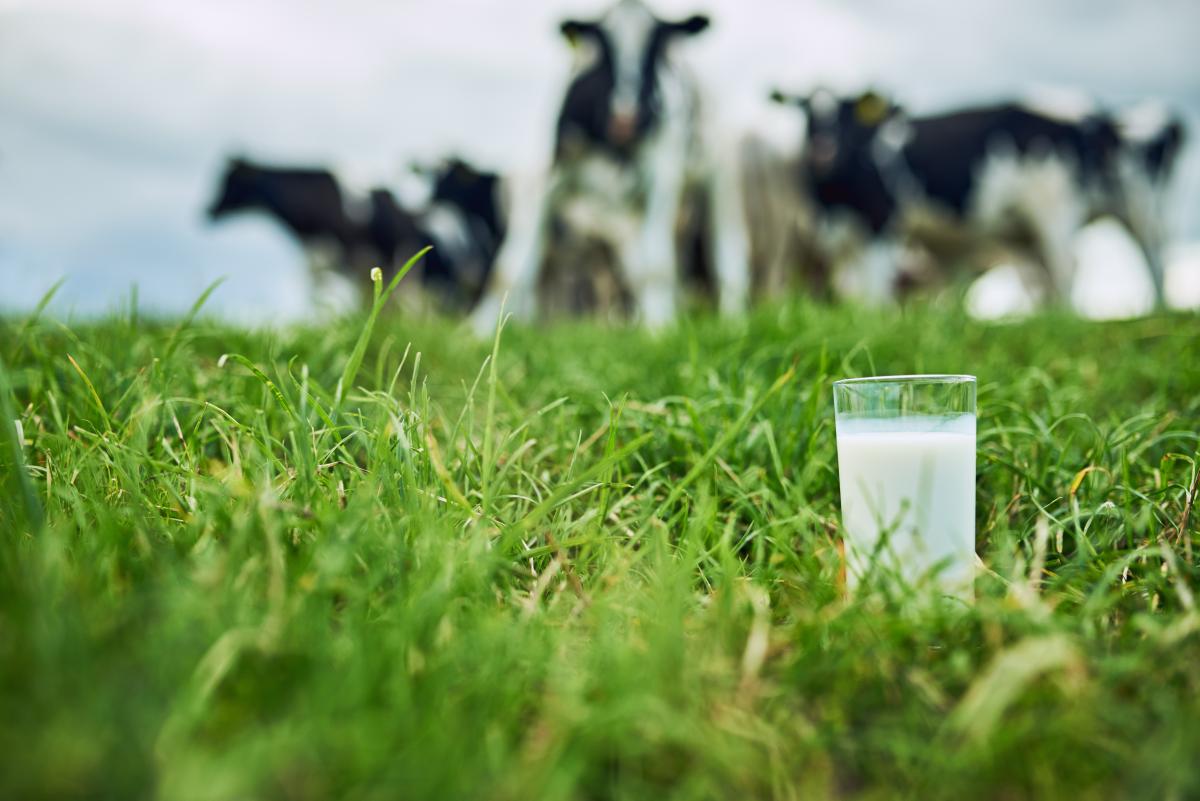 An amendment to the 2018 House Farm Bill that would have allowed the interstate sale of unpasteurized milk was soundly defeated thanks to strong opposition from National Milk, its member cooperatives, several other key industry stakeholders, as well as consumer and public health advocates.
An amendment to the 2018 House Farm Bill that would have allowed the interstate sale of unpasteurized milk was soundly defeated thanks to strong opposition from National Milk, its member cooperatives, several other key industry stakeholders, as well as consumer and public health advocates.
A coalition of dairy farmers, processors, consumer groups, food safety advocates, federal and state public health regulators and the medical community wrote to House leaders last month expressing serious concern with Amendment 30. Offered by Rep. Thomas Massie (R-KY), the amendment would have removed existing regulations that prohibit the interstate sale of raw milk for direct human consumption. It ultimately failed by a vote of 331 against to 79 in favor.
“This amendment would have rolled back decades of food safety improvements by eliminating requirements for pasteurization, which has been cited by the U.S. Department of Health and Human Services as one of the great achievements in public health in the 20th century,” said Jim Mulhern, president and CEO of NMPF. “We greatly appreciate those who joined the current effort and took a stand to oppose this irresponsible amendment that would have significantly compromised food safety.”
In a May 14 letter to House leaders Paul Ryan (R-WI) and Nancy Pelosi (D-CA), NMPF and the International Dairy Foods Association (IDFA) said Massie’s proposed amendment to the Farm Bill represented “an unnecessary risk to consumer safety and public health.” NMPF also organized a coalition of 53 dairy cooperatives, state dairy associations and the American Association of Bovine Practitioners in signing a similar letter of disapproval.
According to the dairy coalition letter, the Centers for Disease Control and Prevention (CDC) reported that nearly 75 percent of raw milk‐associated outbreaks have occurred in states where the sale of raw milk was legal. Thus, the dairy groups argued, eliminating any regulations that stem the interstate sale of raw milk in the United States “would increase the risk to public health, exposing consumers nationwide to the inevitable consequence of falling victim to a foodborne illness.”
MPP Forecast: June 2018
June 13, 2018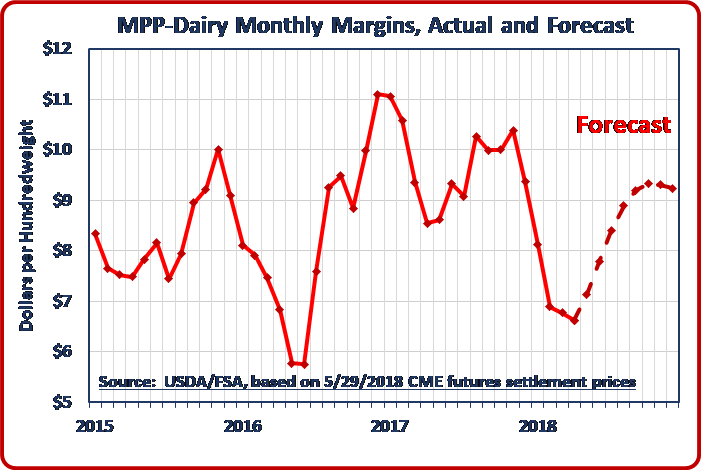 Under the dairy Margin Protection Program (MPP), the monthly margin for April 2018 decreased an additional $0.15 per hundredweight from March, to $6.62/cwt. This was the fifth consecutive drop in the MPP monthly margin. The April all-milk price increased by $0.20/cwt. from March, to $15.80/cwt. The April feed cost formula was up by $0.35/cwt. from March, with most of the increase – on a per-hundredweight-of-milk basis – due to an increase in the cost of alfalfa hay. The prices of corn and soybean meal also contributed smaller increases to the MPP feed cost formula calculation.
Under the dairy Margin Protection Program (MPP), the monthly margin for April 2018 decreased an additional $0.15 per hundredweight from March, to $6.62/cwt. This was the fifth consecutive drop in the MPP monthly margin. The April all-milk price increased by $0.20/cwt. from March, to $15.80/cwt. The April feed cost formula was up by $0.35/cwt. from March, with most of the increase – on a per-hundredweight-of-milk basis – due to an increase in the cost of alfalfa hay. The prices of corn and soybean meal also contributed smaller increases to the MPP feed cost formula calculation.
USDA’s MPP Decision Tool projects that coverage at the $8.00/cwt. and $7.50/cwt. coverage levels could result in total payments in excess of premiums and fees for up to 5 million pounds of production history, based on the May 29 CME dairy and grain futures settlement prices, shown in the accompanying graph. This will be true even if the remaining margins this year are above $8.00/cwt.
USDA has now twice extended the June MPP sign-up deadline. Producers have until June 22 to sign up for coverage for the entire 12 months of 2018. The USDA also has begun issuing payments to farmers who already elected coverage for this year.
USDA’s MPP margin forecasts are updated daily online. NMPF’s Future for Dairy website offers a variety of educational resources to help farmers make better use of the program.
USDA Announces Approval of California Federal Milk Marketing Order
June 13, 2018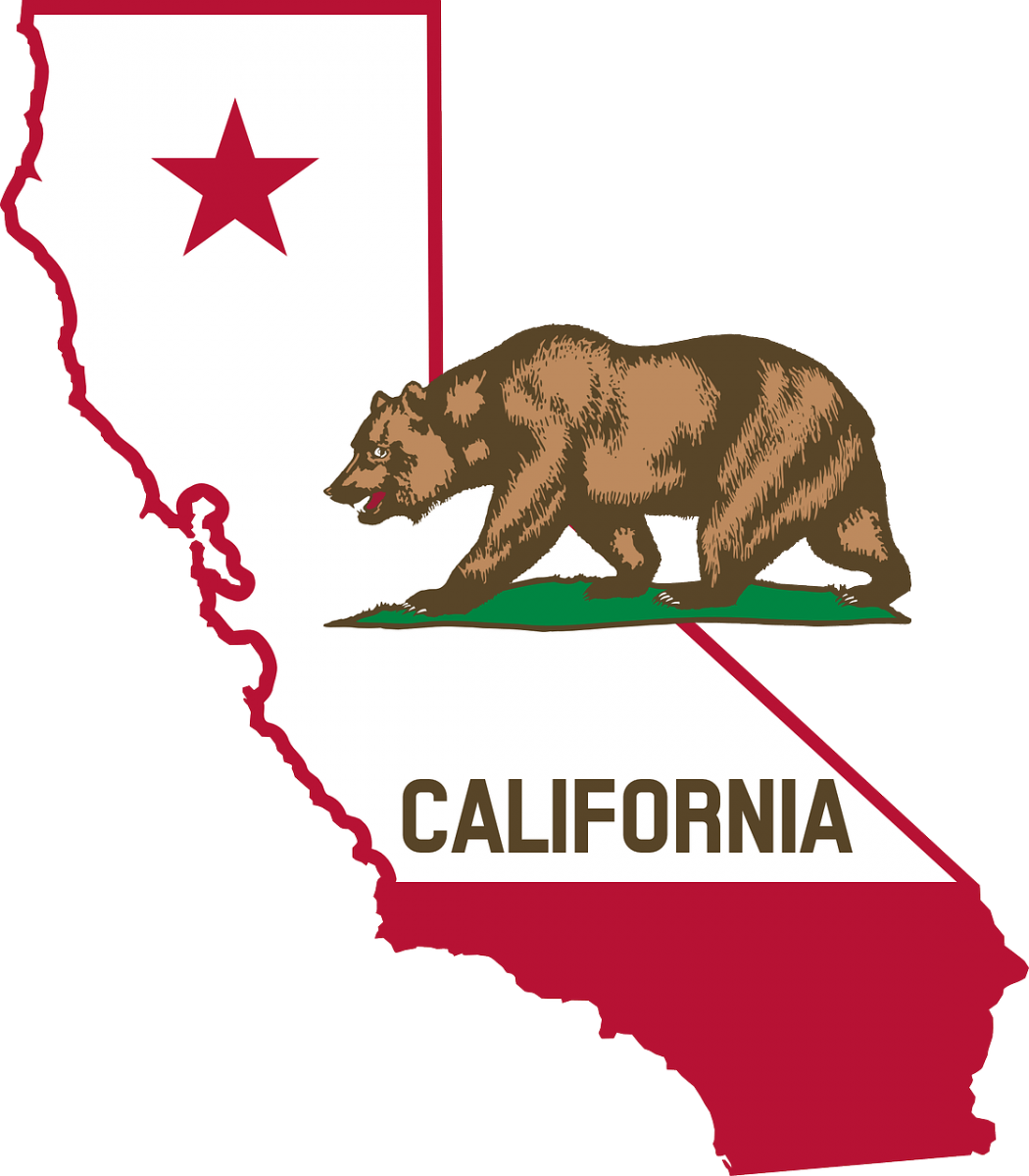 The U.S. Department of Agriculture (USDA) announced on June 7 that California dairy producers approved a Federal Milk Marketing Order (FMMO) for the entire state of California.
The U.S. Department of Agriculture (USDA) announced on June 7 that California dairy producers approved a Federal Milk Marketing Order (FMMO) for the entire state of California.
The new California FMMO will be implemented on Oct. 17 with the publication of the Announcement of Advanced Prices and Pricing Factors. Affected parties must comply with all provisions beginning Nov. 1. USDA will work over the next few months to educate handlers who will be regulated by the new FMMO.
California represents over 18 percent of all U.S. milk production and is currently regulated by a state milk marketing order administered by California Department of Agriculture (CDFA). Once this new FMMO is established, over 80 percent of the U.S. milk supply will fall under the FMMO regulatory framework.
NMPF Tells FDA: Dairy Equivalence Process Must Uphold Food Safety, Resolve Barriers to U.S. Exports
June 13, 2018In May, NMPF told the U.S. Food and Drug Administration (FDA) that the agency needs to adopt a prudent approach on dairy equivalence issues that will be supportive of U.S. dairy exports. At issue is FDA’s determination of whether a foreign country has “equivalent” food safety parameters to the United States, such as those followed by dairy farmers and processors to ensure consumers receive safe milk products.
Earlier this spring, in its first-ever equivalence action, FDA determined that European Union (EU) shellfish are as safe as those harvested in the United States, and as a result recommended granting equivalence to certain types of raw shellfish coming from the EU. This determination is meant to restart trade after an eight-year stalemate that began when the EU abruptly cut off access to its market for U.S. shellfish.
NMPF expressed concerns that the manner in which the U.S. government is handling this shellfish trade topic would pose a deep concern if that same process were applied to the trade of dairy foods. National Milk raised the issue in light of the publication this spring of FDA’s shellfish equivalence determination, and ongoing “Grade A” dairy equivalence assessments of New Zealand, Canada and various countries in the European Union (EU).
In detailed comments to FDA, NMPF and the U.S. Dairy Export Council (USDEC) pointed out that it would be extremely problematic if the agency applied the same process to the dairy industry, as that approach would run counter to nationally harmonized food safety regulations for dairy, fall short of upholding high U.S. consumer protections, and fail to sufficiently tackle barriers to U.S. dairy exports, among other concerns.
NMPF also met with Dr. Stephen Ostroff, deputy commissioner of FDA, and numerous FDA staff working on dairy and trade issues to explain why the U.S. dairy industry has concerns, and to pledge to work with FDA to address these worries by pursuing a more workable approach to tackling dairy trade issues, including those pertaining to equivalence. In a follow-up, NMPF and USDEC jointly sent a letter to FDA Commissioner Scott Gottlieb to reiterate dairy’s concerns and commitment to collaborating with FDA and its interagency partners.
Pace of NAFTA Talks Slows Down But Pressure Heats Up
June 13, 2018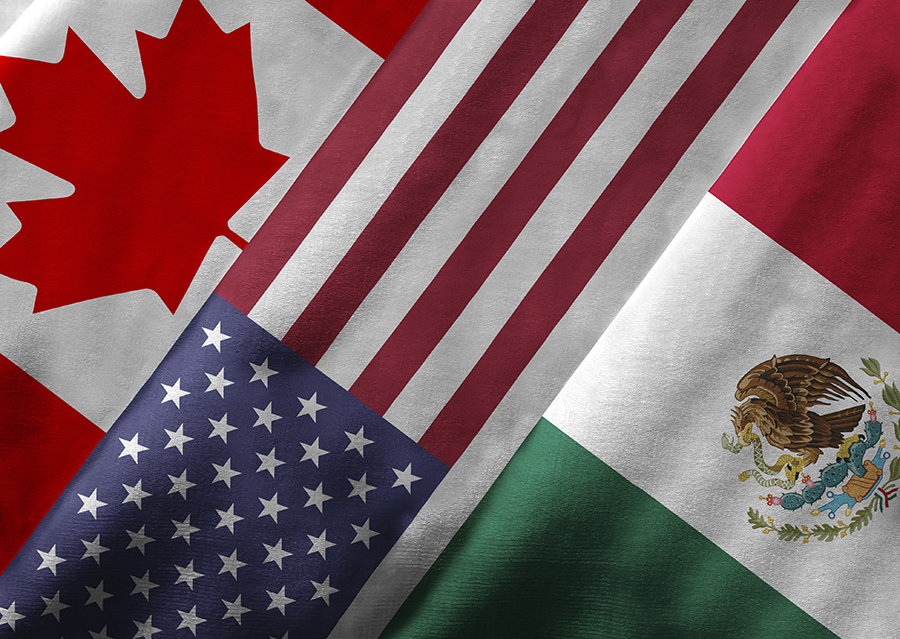 President Donald Trump has indicated he may be willing to wait until next year to reach a revised North American Free Trade Agreement (NAFTA) if it means getting a better deal from Canada and Mexico. NMPF continues to believe that the NAFTA talks are critically important and must be concluded, but not if that comes without the improvements the U.S. dairy industry needs.
President Donald Trump has indicated he may be willing to wait until next year to reach a revised North American Free Trade Agreement (NAFTA) if it means getting a better deal from Canada and Mexico. NMPF continues to believe that the NAFTA talks are critically important and must be concluded, but not if that comes without the improvements the U.S. dairy industry needs.
Some stakeholders involved in the NAFTA talks have recently focused on the possibility of a “skinny” NAFTA, with a limited number of reforms, after negotiators missed Speaker Paul Ryan’s May 17 deadline to deliver a NAFTA rewrite to Congress. However, various administration officials, including Chief Agricultural Negotiator Gregg Doug and Treasury Secretary Steven Mnuchin, have said that the goal remains to secure better terms from Canada and Mexico. This approach has been strongly encouraged by congressional leaders like House Ways & Means Committee Chairman Kevin Brady and Senate Finance Chairman Orrin Hatch. Moreover, the President himself has vocally and repeatedly touted the importance of Canada making reforms to its dairy system in recent weeks.
NMPF and U.S. Dairy Export Council (USDEC) have been working closely with the office of the U.S. Trade Representative (USTR), the Agriculture Department and members of Congress to ensure that the dairy industry’s voice is heard and that the administration stands by its pledges to address dairy trade issues regarding NAFTA.
NMPF continues to tell lawmakers and administration officials that the NAFTA renegotiations must address Canada’s dairy trade obstacles, including its Class 7 pricing program and exorbitant tariffs. Secondly, a successful NAFTA deal must preserve U.S. access to the Mexico market, the No. 1 U.S. dairy export market.
NMPF Joins Dairy Groups to Launch Campaign on Dairy’s Economic Impact
June 13, 2018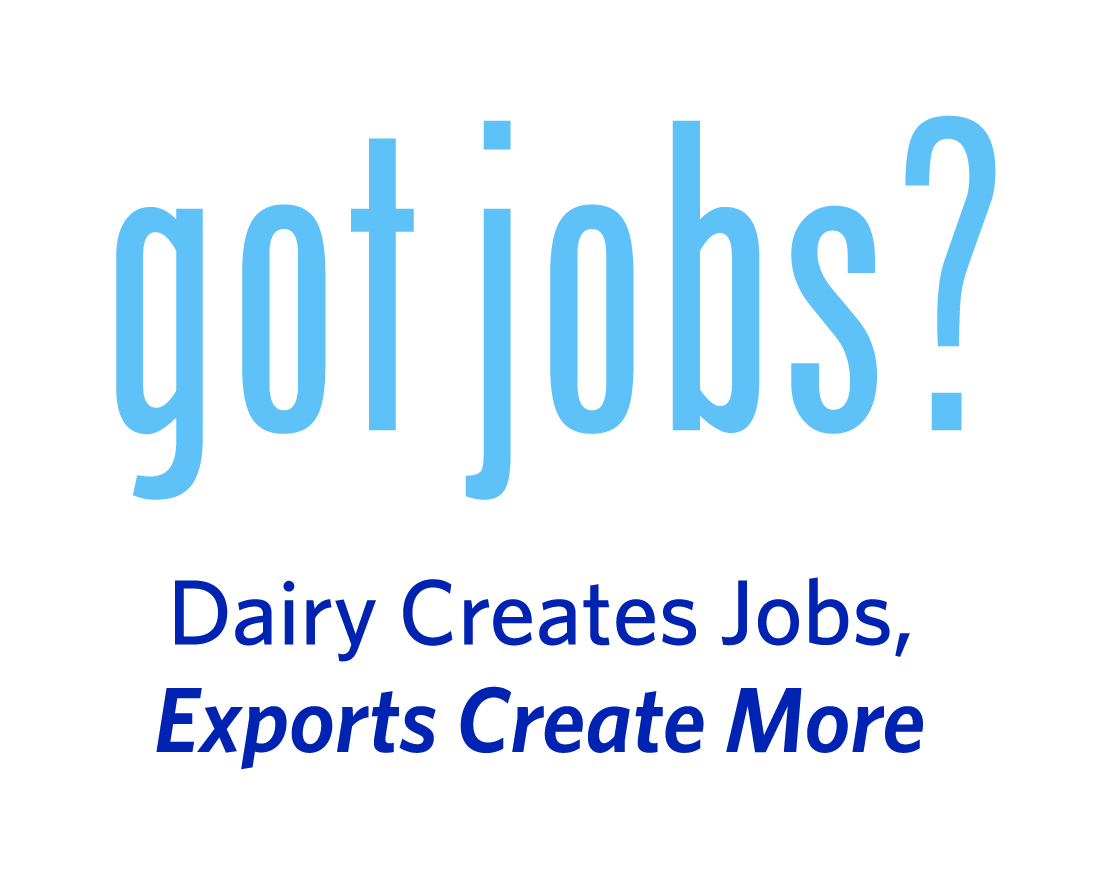 To help promote the U.S. dairy industry as a job-creating and exports machine, National Milk has joined the U.S. Dairy Export Council (USDEC) and the International Dairy Foods Association (IDFA) to launch a year-long campaign titled “Got Jobs? Dairy Creates Jobs, Exports Create More.”
To help promote the U.S. dairy industry as a job-creating and exports machine, National Milk has joined the U.S. Dairy Export Council (USDEC) and the International Dairy Foods Association (IDFA) to launch a year-long campaign titled “Got Jobs? Dairy Creates Jobs, Exports Create More.”
Most Americans know milk and other dairy products are an essential part of a healthy diet. But less well-known is dairy’s contribution to the health of the U.S. economy and the economies of every state across the country. This storytelling campaign aims to shine a brighter, data-driven spotlight on the positive effects of dairy’s economic engine.
Over the next year, the three dairy groups will share in-depth data and compelling narratives featuring hardworking dairy farmers, innovative dairy company employees, resourceful retailers and many others throughout the food supply chain at its website GotDairyJobs.org. The site will offer monthly features, videos and data-driven facts that demonstrate dairy’s continued impact on jobs, tax revenue and communities around the country. Using #GotDairyJobs, the dairy industry will amplify the campaign and create the dairy jobs conversation on Twitter, Facebook and Instagram.
“As milk continues its journey from farm to table, it becomes a job-creation machine, employing farm workers, truck drivers, construction workers, factory workers, retailers and even cargo ship captains navigating the ocean to ports in fast-growing countries demanding more dairy than their own countries can produce,” said Jim Mulhern, president and CEO of NMPF. “The United States is uniquely positioned to meet this growing global need, which allows U.S. dairy to provide opportunities for job creation and growth in the United States.”
NMPF Calls Out Sweden’s Oatly for Exploiting International Double Standard in Its Labeling
June 13, 2018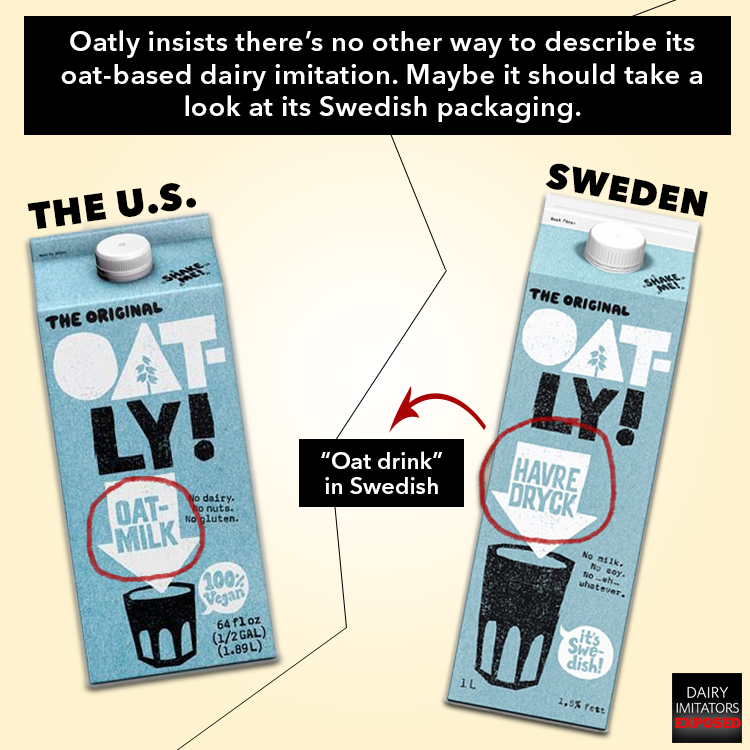 Swedish beverage company Oatly needs to respect U.S. food labeling standards that restrict the use of the term “milk” to real dairy products, according to NMPF, especially because the brand already follows such rules in its native Sweden.
Swedish beverage company Oatly needs to respect U.S. food labeling standards that restrict the use of the term “milk” to real dairy products, according to NMPF, especially because the brand already follows such rules in its native Sweden.
Oatly is the latest brand targeted by NMPF because it exploits the U.S. Food and Drug Administration’s (FDA) lax regulatory environment. In promoting its cereal-derived beverage as oat “milk,” Oatly is blatantly skirting U.S. food labeling regulations, which dictate that any product using dairy terms including “milk,” “cheese” or “yogurt” must have originated from an animal. NMPF has long insisted that FDA take enforcement action against similarly misbranded products, the same way the standard is enforced in Europe and many other nations.
NMPF criticized Oatly for complaining to FDA in an April 11 letter that it would be placed at a disadvantage if it could not call its product “oat milk.” Oatly’s complaint was sent to FDA in support of a petition by the vegan trade association Good Food Institute (GFI). GFI’s petition calls on FDA to modify existing food standards to endorse the current marketplace abuse of some food companies using dairy terms on products made from plants, not milk.
“Budding and innovative companies like Oatly would be placed at a serious disadvantage if we were no longer allowed to use terms that instantly and accurately convey what’s inside the carton,” said Oatly U.S. General Manager Mike Messersmith, in arguing that its product must be labeled as “oat milk.”
However, in its home market, Oatly is sold as “havre dryck,” or “oat drink” in Swedish. European Union (EU) regulations – similar to existing U.S. government standards – define milk as an animal product and do not allow plant-based milk copycats to use dairy terms. Messersmith’s letter did not explain this obvious contradiction to his argument.
To spotlight Oatly’s doublespeak to the FDA, NMPF has created a graphic that illustrates the difference between Oatly’s U.S. and Swedish packaging. This image will join others in NMPF’s “Dairy Imitators: Exposed” campaign, which calls out non-dairy imitation brands for ignoring federal standards and failing to live up to real milk’s complete nutrient package.
USDA Releases Proposed Bioengineered Food Disclosure Standard
June 13, 2018The U.S. Department of Agriculture (USDA) published its proposed National Bioengineered Food Disclosure Standard (NFBDS) on May 4, which aims to provide clarity on when and how to label foods that contain bioengineered ingredients. NMPF was pleased that USDA made clear that meat and milk that are produced by animals fed bioengineered grain are not bioengineered, and therefore not subject to the rule. NMPF fought hard during the legislative process to establish that determination.
However, other provisions of the proposal remain unresolved as the agency seeks additional feedback from the public. Among those are whether to require the disclosure of highly-refined ingredients such as beet sugar, corn syrup and soybean oil that do not contain any bioengineered DNA, even though the definition of a bioengineered food requires that it “contain genetic material.” Also at issue is the threshold level of bioengineered ingredients that will trigger disclosure. The alternatives proposed include setting the threshold at either 0.9 percent or 5 percent.
NMPF said the final USDA rule will need to make clear that bioengineered enzymes – typically used in the making of cheese – are exempt from disclosure, especially since every country with a bioengineered food disclosure standard already provides such an exemption.
Vitamins added to foods also need to be exempt under USDA’s disclosure proposal, NMPF said. Unless the rule makes this clear, many fluid milk products, which contain Vitamins A and D, could need to be labeled as bioengineered if they use bioengineered vitamins. NMPF is working with the Coalition for Safe and Affordable Food and will file comments identifying this issue as a huge oversight that must be remedied.
NMPF was pleased that the design of the symbol to be used on bioengineered foods conveys a neutral to positive image, as bioengineering is frequently portrayed in a negative light. NMPF will encourage USDA to send a clear message that bioengineered disclosures – present or not – must not be false and misleading.
NMPF will work through these and other issues as it prepares to submit comments by to the July 3 deadline.
Peel Back the Label, Funny or Die Create Video Illustrating Ridiculous Food Labeling Practices
June 13, 2018 To further highlight the absurdity of deceptive food labels, Peel Back the Label and Emmy-winning comedic production company Funny or Die created a video that shows the lengths food companies will go to confuse consumers into buying their products.
To further highlight the absurdity of deceptive food labels, Peel Back the Label and Emmy-winning comedic production company Funny or Die created a video that shows the lengths food companies will go to confuse consumers into buying their products.
The video features two food executives – one from a milk company and the other from a marketing agency – scheming over how to separate a gallon of milk from the rest of the pack, with consumers paying the price as they encounter increasingly ridiculous deceptive and misleading food labels with terms like “non-GMO” and “natural.”
The video was originally posted on the Funny or Die website and shared on its social media channels. Peel Back the Label then shared the video on its own Facebook and Twitter pages. To date, the video has garnered over a million views – a number set to increase as Peel Back the Label continues to amplify it across its platforms.
The video release with Funny Or Die is the latest effort by Peel Back the Label – launched and managed by NMPF – to highlight food company “bad actors” that using misleading food labeling or deceptive marketing to increase sales by stoking consumer fear and misconceptions about food. The campaign gives consumers access to the information they need to separate hype from fact as they make informed food decisions.
NMPF Opposes Extension of Clean Water Act to Groundwater Sources
June 13, 2018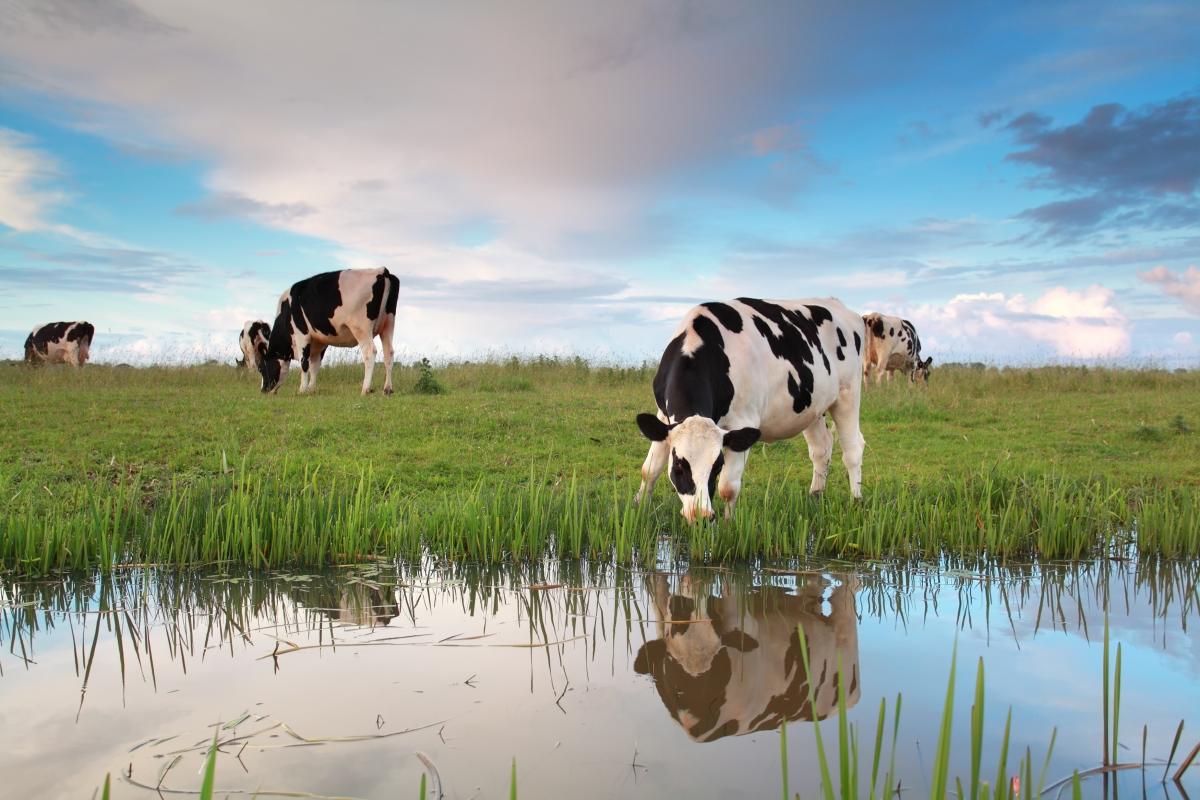 Last February, the U.S. Environmental Protection Agency (EPA) published a request for comment regarding previous statements it made about pollutant discharges from point sources that reach surface waters via groundwater. EPA has said that those discharges may be subject to the Clean Water Act (CWA) if there is a direct hydrological connection between the surface water and groundwater. NMPF joined with other agriculture groups in May in urging EPA to rescind its statements that groundwater could be regulated under the CWA.
Last February, the U.S. Environmental Protection Agency (EPA) published a request for comment regarding previous statements it made about pollutant discharges from point sources that reach surface waters via groundwater. EPA has said that those discharges may be subject to the Clean Water Act (CWA) if there is a direct hydrological connection between the surface water and groundwater. NMPF joined with other agriculture groups in May in urging EPA to rescind its statements that groundwater could be regulated under the CWA.
NMPF does not believe the CWA should regulate groundwater and that such regulation is best left to the states. NMPF noted that Congress specifically considered and chose not to include groundwater under the CWA. Unfortunately, several courts have re-interpreted the CWA and taken a contrary stance, even though there also have been courts that ruled the CWA cannot regulate groundwater. It is likely the issue eventually will reach the Supreme Court.
NMPF is concerned about regulating farms under the CWA because a fact pattern can be prosecuted as a criminal act, resulting in possible imprisonment for up to six years and financial penalties of up to $100,000 per day. EPA’s past statements on the issue are somewhat ambiguous. One example: “A general hydrological connection between all waters is not sufficient to subject an operator or owner of a point source to liability under the CWA, instead there must be a direct hydrological connection to surface waters.” Determining if there is a “direct” connection is not easy and there is considerable uncertainty in those determinations.
NMPF and other agriculture groups have asked EPA to initiate rulemaking, retract past statements and make it clear that groundwater pollution should be regulated by state and local governments, not the federal government.
EPA Reinvigorates Farm Air Emissions Regulatory Efforts
June 13, 2018After years of inactivity, the livestock industry-funded National Air Emissions Monitoring Study (NAEMS) is moving forward at the U.S. Environmental Protection Agency (EPA). NMPF staff met with senior officials at EPA in late May to discuss the agency’s plans for estimating air emissions from animal feeding operations.
NAEMS monitoring was completed on dairy, pork and poultry farms more than seven years ago, but EPA has not finalized any emission estimating methodologies for animal feeding operations. Additionally, EPA has only drafted methodologies for about one-quarter of the emissions source and pollutant combinations studied in the NAEMS. EPA was expected to develop and begin publishing emissions estimating methodologies by 2009 so the methodologies could be used by federal, state and local agencies, along with livestock industry operators, to determine compliance with the Clean Air Act and other statutory requirements.
According to the EPA’s Office of the Inspector General, delays in developing the emission estimating methodologies stem from limitations with NAEMS data, uncertainty over how to address feedback from the EPA’s Science Advisory Board, and a lack of EPA agricultural air expertise and committed resources. As a result, requirements to control emissions from individual animal feeding operations remain undetermined and enforcement protections for consent agreement participants remain in effect.
EPA stated it will issue its timeline for completing the work by July. EPA also stated that if regulatory requirements are triggered by the emission estimates, such as permits under the Clean Air Act (CAA), agriculture entities will have 120 days to apply for such a permit. It is uncertain whether some dairy operations will need permits or face other regulatory burdens. NMPF will remain engaged with EPA as this process moves forward.
FARM Program to Host Third Evaluator Conference in Kansas City
June 13, 2018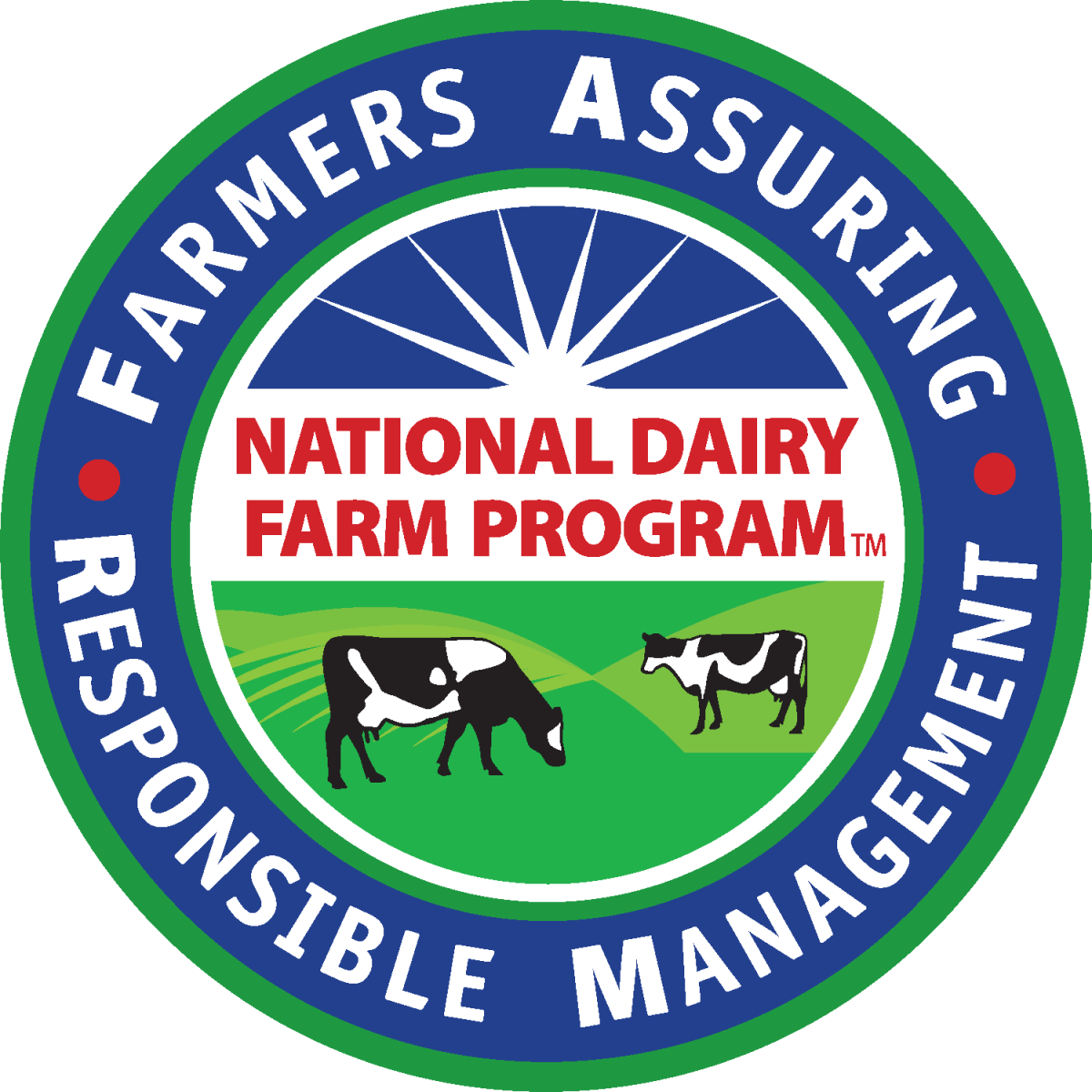 The National Dairy Farmers Assuring Responsible Management (FARM) Program will host its third annual FARM Evaluator Conference July 24-26 in Kansas City, Missouri. Following the success of previous conferences, evaluators from across the country will gather again to network, brainstorm and learn from the nation’s leading subject matter experts.
The National Dairy Farmers Assuring Responsible Management (FARM) Program will host its third annual FARM Evaluator Conference July 24-26 in Kansas City, Missouri. Following the success of previous conferences, evaluators from across the country will gather again to network, brainstorm and learn from the nation’s leading subject matter experts.
This year’s conference will focus on handling on-farm animal care crises, workforce development and proper antibiotic use. In addition, there will be time dedicated to discussing FARM Animal Care Version 4.0. This will allow participating organizations to share feedback and thoughts relevant to the next version of the program, after which FARM staff will share that information with its Animal Care Technical Writing Group.
Registration for the conference is now open. Questions can be directed to Beverly Hampton Phifer at bhamptonphifer@nmpf.org.
Undeniably Dairy Campaign Kicks Off Second Year in June
June 13, 2018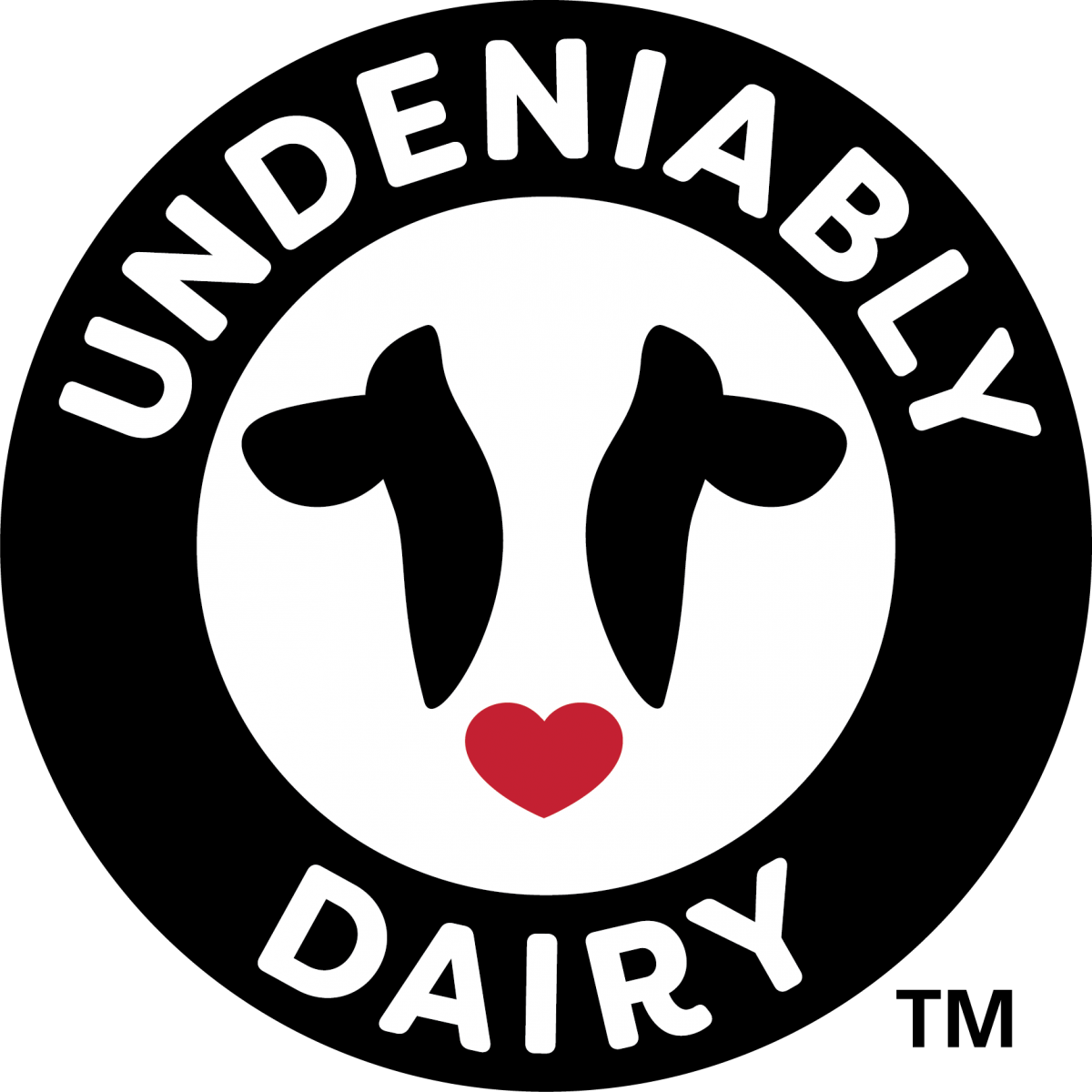 For the second year in a row, NMPF is joining farmers, cooperatives, brands and other industry stakeholders in recognizing June Dairy Month by getting involved in the Innovation Center for U.S. Dairy’s Undeniably Dairy initiative.
For the second year in a row, NMPF is joining farmers, cooperatives, brands and other industry stakeholders in recognizing June Dairy Month by getting involved in the Innovation Center for U.S. Dairy’s Undeniably Dairy initiative.
Throughout the summer, Undeniably Dairy is promoting a new chapter in its multi-year campaign to celebrate dairy’s innate goodness. This latest endeavor will celebrate all those who are “Undeniably Devoted to Dairy,” from farmers to chefs and everyone in between.
Undeniably Dairy – funded by dairy farmers through their checkoff – will reach consumers who have questions about dairy through nationally recognized podcasts, digital and media partnerships, and by farmers and other members of the dairy community who will share personal stories of devotion. Farmers work with experts every day that help ensure healthy cows and responsibly produced milk.
For cooperatives and producers who want to share stories of how they are “Undeniably Devoted” to their livelihoods, here are some ways to celebrate:
- Take a picture of your employees, veterinarians, nutritionists, milk haulers, and others. Share it along with a story of their devotion on your social channels using #undeniablydairy.
- Share content from the Dairy Hub about the undeniably devoted – you can find an Undeniably Dairy resource link on the home page. If you haven’t joined the Dairy Hub yet, register here.
- Talk about those devoted to dairy when conducting farm tours or talking with neighbors.
- Encourage friends and family to do the same.





